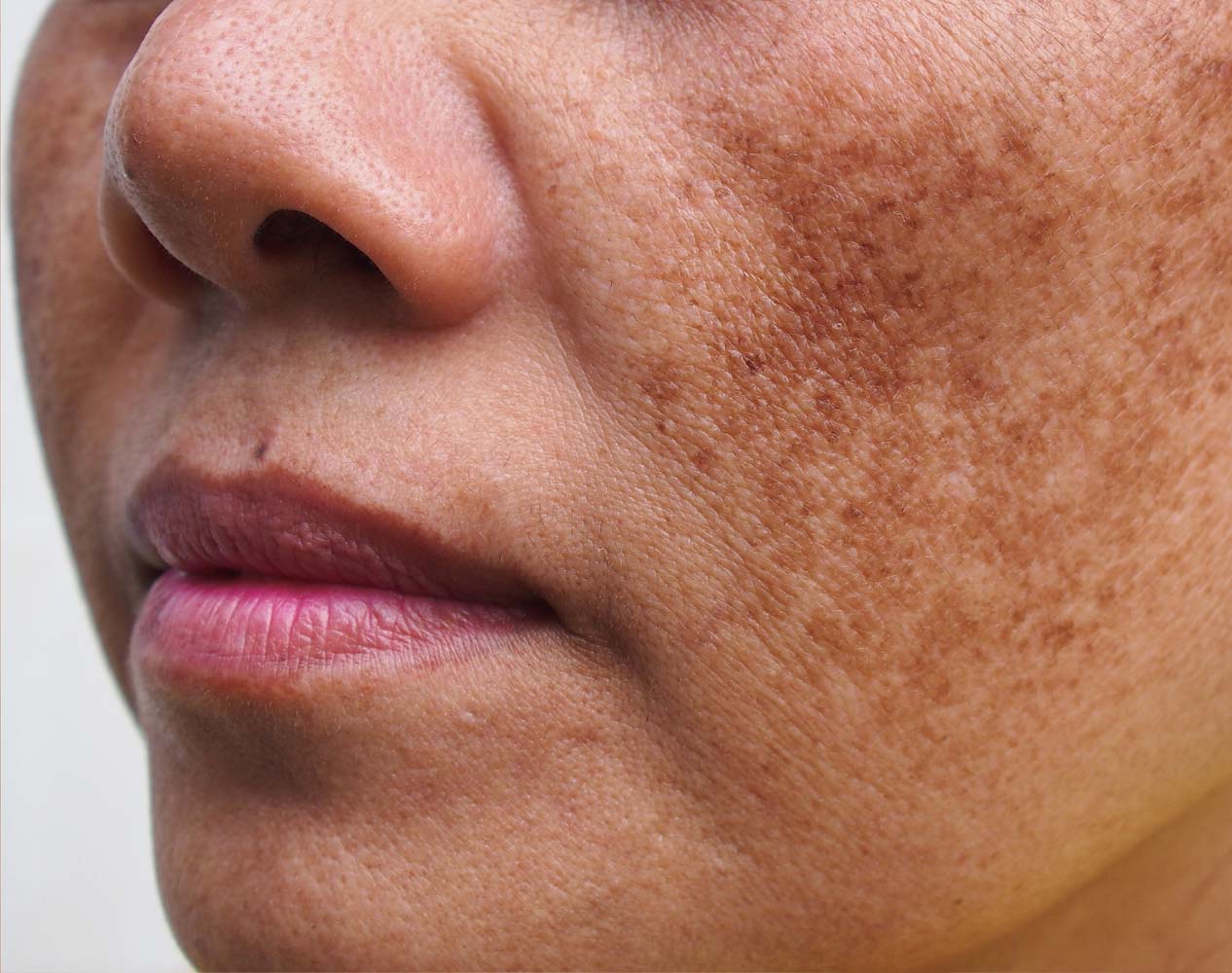
Melasma
Melasma
Melasma is a skin condition that causes patches and spots, usually on the face, which are darker than your natural skin tone.

Melasma causes and risk
It may be due to the malfunction of the melanocytes (the color-making cells) in the skin, causing them to produce too much color in certain spots. As a result, people with light brown skin to darker skin tones may be more likely to develop melasma as they have more melanocytes than people with lighter skin do. Risk factors can include Trusted Source:
Potential triggers for melasma can include:
Symptoms of melasma
The primary symptom of melasma is hyperpigmentation — the development of discolored patches of skin or uneven skin tone. These patches are typically flat and appear darker than an individual’s skin tone, often brown or gray in color. While melasma does not cause any other physical symptoms, some people may find the appearance of these patches bothersome. Patches caused by melasma should not cause physical pain. Patches most commonly appear on the face. Common locations include the upper lips, bridge of the nose, cheeks, and forehead. Less commonly, a person may also have patches on their arms and neck. It is important to note that melasma is not a form of skin cancer, though it may sometimes look like other skin conditions. It is best to consult a dermatologist for diagnosis and treatment.
Diagnosing melasma
Dermatologists find most cases of melasma easy to diagnose during a visual examination. However, since melasma can resemble other skin conditions, a dermatologist may take a small biopsy during the initial visit. This may help rule out other conditions. A biopsy involves removing a very small portion of the skin for further examination in a laboratory. A doctor may also use a device called a Wood’s light to look more closely at the skin.
Treatment and prevention of melasma
Treatment is not always necessary for melasma. If hormonal changes, such as those that occur during pregnancy or while taking birth control pills, have caused melasma, it will fade after delivery or once a person stops taking the pills. To prevent melasma, a dermatologist will likely recommend a high-SPF sunscreen. For other people, melasma can last for years or even for the rest of their lives. If melasma does not fade over time, a person can seek treatment to help remove or fade the patches. However, not all treatments work for everyone, and melasma may come back even after successful treatment. Treatment options for melasma can include:
Doctors often use hydroquinone as the first line of treatment for melasma. Hydroquinone is available as a lotion, cream, or gel. It works by lightening the color of the skin patches. A person can apply the hydroquinone product directly to the patches of skin that are discolored or uneven. Hydroquinone is available as a prescription.
Corticosteroids and tretinoin come in creams, lotions, or gels. Both corticosteroids and tretinoin can help lighten the color of the melasma patches.
In some cases, a dermatologist may choose to prescribe combination creams that may contain hydroquinone, corticosteroids, and tretinoin in one. These are called triple creams. Additional topical medications In addition to or instead of other medicated creams, a dermatologist may also prescribe azelaic acid or kojic acid. These acids work to lighten the dark areas of skin. Medical procedures If topical medications do not work, a dermatologist may recommend procedures such as:
Some of these treatment options have side effects or may cause additional skin problems. It is best to speak with a doctor or dermatologist about possible risks.